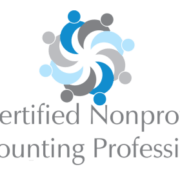Financial sustainability and your nonprofit
If your not-for-profit relies heavily on a few funding sources — for example, an annual government or foundation grant — what happens if you suddenly lose that support? The risk may be compounded if you generally spend every penny that comes in the door and fail to build adequate reserves. Bottom line: If your nonprofit hopes to serve its community many years into the future, you need to think about financial sustainability now.
Information, please
No organization can accurately evaluate its sustainability without timely, comprehensive and accurate financial reporting. In addition to providing a current picture of your standing, financial reports should compare actual figures with historical and projected numbers. Some nonprofits use “dashboards” that give real-time financial data, ratios and trends in easily understood graphic form.
It’s not enough for the board to review financial statements. Board members must provide true fiscal oversight and not leave major financial decisions to staff, no matter how trusted and loyal. The finance committee should report regularly to the full board and engage in dialogue about their reports and the organization’s financial health. Most importantly, your board shouldn’t merely take a backward-looking view but should also consider the future — for example, how current trends and developments might affect future plans for funding your nonprofit’s mission.
Lower costs, more revenue
Holding expenses down and continually searching for new revenue sources are critical to long-term financial sustainability. Many nonprofits forge formal partnerships with other organizations to share costs. Look into partnering with organizations that share your missions and serve similar populations. Such collaboration may enable you to make better use of limited resources while reducing competition for funding. By joining forces, you can more quickly scale up high-demand programs or services.
If you’re seeking new revenue ideas, consider expanding fee-based service offerings to new locations or populations. For example, an organization that provides services to children with disabilities in schools also could offer the services to children with disabilities in foster homes.
Funds in reserve
Finally, maintaining adequate reserves is a key component of financial sustainability. If you don’t have a reserve fund — or have one but no formal policy for determining the appropriate amount, maintaining it and allocating funds when necessary — make developing such a policy a priority. Contact us for help.
© 2018












